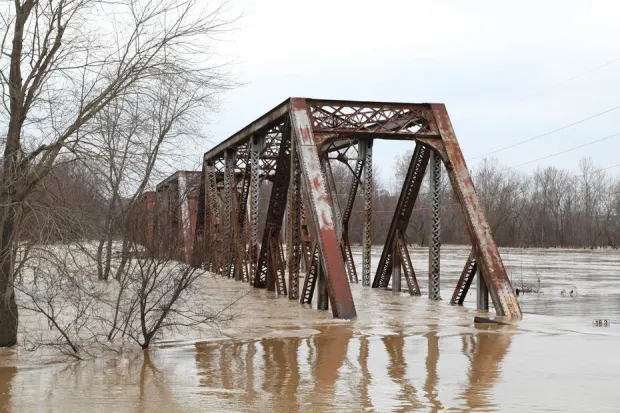No Impact Study
A hydrology and hydrological study is required if an “obstruction” (a bridge for example) is planned to be constructed within the floodway of a FEMA detailed study area. Any obstruction, including fill material, retaining walls, buildings, pavilions to name a few will require FEMA permitting. The obstruction that we are going to talk about is related to bridges.
A hydraulic study will ultimately determine the flow in cubic feet per second of the stream or river for various storm return intervals. For example, a 100-year storm might produce 300,000 ft.³ per second and a 50-year storm may produce 75,000 ft.³ per second of flow. Hydraulic studies often use regression equations that take into consideration the area of land within the watershed, the terrain and slopes of the watershed. Once the various flow rates are determined, the next step is to determine how that flow will behave as it enters the bridge site. This portion of the study is called the hydraulic study. In the hydraulic analysis, the engineer will determine flood elevations at various cross sections of the stream, and at the bridge itself. This is where the engineer determines how high the bridge needs to be, how long the bridge needs to be, and how the water will behave as it navigates piers, abutments, and the roadway encroachments. This leads to an iterative process between the hydraulic engineer and the bridge engineer to determine the final bridge geometry.
If the hydraulic engineer can determine that none of the flood elevations in the previous flood study will increase as a result of the construction of the new bridge, it is possible to achieve what FEMA calls a “No-Impact study”. This allows the owner to proceed without making revisions to the FEMA flood maps. Often a bridge replacement can achieve a “No-Impact” however, new bridge construction usually leads to revisions of the FEMA flood maps (unless the bridge is big enough to completely span floodway). Revisions to the FEMA flood maps will trigger a process known as a CLOMR and LOMR.
CLOMR – Conditional Letter of Map Revision
In a hydraulic study, where an obstruction is placed in a detailed FEMA study area, and it has been determined that the flood elevations will increase as a result of the construction, a CLOMR must be prepared to obtain required FEMA permitting. A survey of the area must be completed, and the proposed bridge must be modeled in the hydraulic software. After the CLOMR is prepared and all the eyes are dotted and tees are crossed, FEMA will issue a CLOMR permit and construction may commence.
LOMR – Letter of Map Revision
After construction of the bridge is completed, a survey must be done on the as-built structure. The data from the survey is then put into the hydraulic model to verify that the as-built conditions are the same or similar to the conditions submitted in the CLOMR. This is the final step in the FEMA permitting process for the CLOMR and the LOMR process.
To determine if a stream is in a detailed, FEMA study area, you can find it here:
https://msc.fema.gov/portal/home
Contact: https://areteengineers.com/


